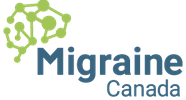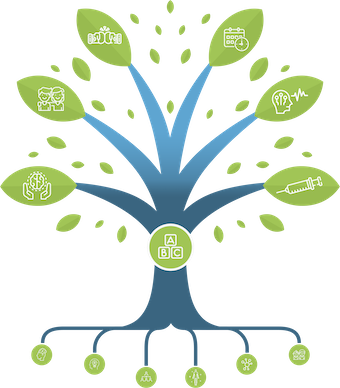Cognitive-Behavioural Therapy: is it a good option to improve migraine?
What is Cognitive Behaviour Therapy (CBT)?
Cognitive Behavioural Therapy (CBT) is a psychological treatment that focuses on changing negative patterns of thinking and behaviour. CBT helps people learn new ways of thinking and behaving to reduce stress, improve mood, and cope better with problems. CBT is based on the premise that how we feel (i.e. emotions) is largely dependent how we think and behave, and emphasizes the process of learning new skills to better manage (rather than fix) problems.
Does CBT help? Does it help migraine?
CBT is one of the most researched psychological treatments and has been found to be effective in helping people with a host of difficulties, including stress, mental health problems (such as depression and anxiety), and various health problems, such as migraines. CBT can help to reduce the frequency and severity of headaches. It can help you learn coping strategies to better manage migraines.
If my health care provider recommends CBT, is it because I have mood problems that are the cause of my migraines?
CBT helps not because a psychological basis is viewed as the cause of migraines, but because it is believed that what people do and how people think can trigger migraines, make migraines worse, and reduce one’s quality of life in the midst of migraines. For some people, mood disorders are indeed a contributor to the migraine situation and should be managed proactively. Sometimes, learning how to deal with the stressors of life can also decrease migraine attacks. There are many reasons to use CBT for migraine. It never means that migraine is an imaginary condition! (See this post)
How can CBT improve migraines specifically?
CBT helps people learn a new way of managing and coping with migraines. Changing negative thought patterns can decrease stress and improve emotions, which can then decrease the frequency and severity of migraines. By monitoring different thoughts and behaviours, people can gain valuable insight about their specific migraine triggers and take steps to better manage their triggers to avoid headaches. Learning new behaviours, such as deep breathing exercises, meditation, activity pacing, and assertive communication, can also help people better control their headaches. CBT can also help people improve their quality of life despite migraines.
Is there more than one type of CBT?
There are a number of different psychological treatments that would fall under the umbrella of CBT. These include Acceptance and Commitment Therapy (ACT), Mindfulness-Based Stress Reduction (MBSR), relaxation training, and hypnosis. However, all CBT focuses on changing thoughts and behaviours, and learning more adaptive ways to think and behave. It emphasizes learning and is usually more present- and future-focused, rather than exploring childhood problems of the past.
What about other psychological therapies (not CBT)?
There are many different types of psychological therapies (for example psychoanalysis), and all of these occur within the context of a unique therapeutic relationship. These therapies have not been as extensively studied as CBT and may or may not improve headaches.
Do I have to see (and pay for) a therapist? What about self-help?
Although working with a therapist can be very helpful, it is sometimes difficult to find a therapist qualified to offer CBT, and sometimes the cost may be difficult to afford. In such cases, self-help CBT may be a cost-effective and beneficial alternative. There are many good CBT workbooks that can be purchased in bookstores or online, and there are also good online CBT programs that you can work through on your own. Self-help books and programs may not be helpful if problems are severe or when motivation is low. Group CBT has been studied and can be an interesting option if available in your area. Ask your physician and research the resources in your community.
If you want to know more about CBT and what to expect, read here.
Life is a path, migraine fluctuates. Seeking support and guidance from a therapist is always an option.
REFERENCES
1. Christiansen S, Jurgens TP, Klinger R. Outpatient Combined Group and Individual Cognitive-Behavioral Treatment for Patients With Migraine and Tension-Type Headache in a Routine Clinical Setting. Headache. 2015;55(8):1072-91.
2. Cousins S, Ridsdale L, Goldstein LH, Noble AJ, Moorey S, Seed P. A pilot study of cognitive behavioural therapy and relaxation for migraine headache: a randomised controlled trial. J Neurol. 2015;262(12):2764-72.
3. Martin PR, Mackenzie S, Bandarian-Balooch S, Brunelli A, Broadley S, Reece J, et al. Enhancing cognitive-behavioural therapy for recurrent headache: design of a randomised controlled trial. BMC neurology. 2014;14:233.
4. Ng QX, Venkatanarayanan N, Kumar L. A Systematic Review and Meta-Analysis of the Efficacy of Cognitive Behavioral Therapy for the Management of Pediatric Migraine. Headache. 2017;57(3):349-62.
Post#703
Categories
THE MIGRAINE TREE
- BRANCHES
- ACUTE TREATMENTS
- DEVICES AND NEUROMULATIOIN
- PREVENTIVE TREATMENTS
- PROCEDURES AND INJECTIONS
- SELF-CARE AND LIFESTYLE
- SOCIAL LIFE
- TRUNK
- ROOTS
OTHER CATEGORIES




